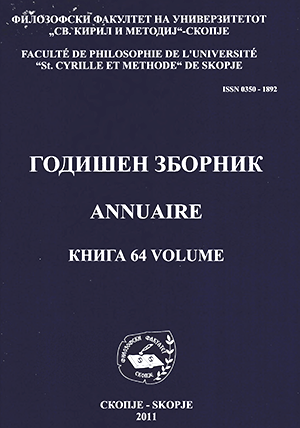CARAVAGGIO - 400 YEARS OF REALISM IN THE EUROPEAN PAINTING
DOI:
https://doi.org/10.37510/Keywords:
CARAVAGGIO, BAROQUE, REALISM, ROME, NATURALISM, GENRE, RELIGIOUS PAINTINGAbstract
Last year's great anniversary, 400 years from Caravaggio 's death, is still a motif for various kinds of mementos for the great Italian painter, in Italy and worldwide. The European art owns him much and we also show deep respect for his artistic achievements, which are influential to the present day.
The emotional and deeply humane realistic art of Michelangelo Merisi Caravaggio (1571 - 1610), one of the most outstanding artists of the seventeenth century, foreshadowed to a great extent the subsequent development of Italian painting. For over 200 years, however, his art was neglected, largely owing to the academic criticism of the seventeenth centuiy, which repudiated the “stark naturalism ” of Caravaggio.
Caravaggio 's art was realistic, nature being for him a source of inspiration, an ideal to be imitated. He considered the main task of art a·: precise reflection of nature and a depiction of concrete people and objects devoid of any idealization. Caravaggio introduced types of common people not only in to genre scenes but also into religious subjects which he presented in new light. His saints are not only given the likeness of ordinary men, but they are endowed with human emotipns as well.
The roots of his art, an art which proved to be so startling and novel a phenomenon to the Romans, were formed in Lombardy where the realistic traditions of the Renaissance were still strong in his time. Popular imagery, contrasted lighting, emotional intensity, interest in genre scenes - all these Caravaggio imbibed from the works of North Italian masters. Caravaggio 's realism and his interpretation of religious subjects account for the fact that during his lifetme his works were not always accepted by the Church and after his death, they were frequently attacked by theoreti- cians of academ icism.
But Caravaggio 's revolutionaiy art proved to be so vivid and lasting that it affected several generations of artists both in Italy and abroad. The “Prince of darkness“, or so-called “maestro di tenebroso” became one of the most influential figures in the art of the modern era.
Downloads
Published
Issue
Section
License
Copyright (c) 2011 Tatjana Filipovska

This work is licensed under a Creative Commons Attribution 4.0 International License.





